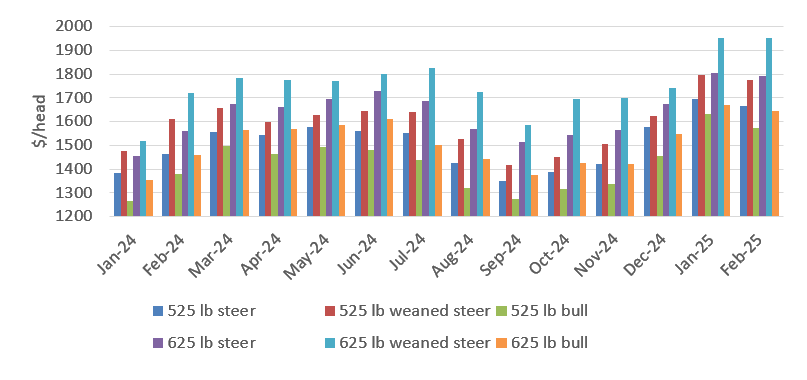Over the 14-month period evaluated, 525-pound bull calves were discounted $88 per head compared to same weight steers while 625-pound bull calves were discounted $125 per head compared to same weight steers. Perhaps by coincidence, 525-pound steers and 625-pound bulls averaged the same value over this 14-month period at $1,512 per head. Taking it a step further, 525-pound value added steers sold for $85 more per head than same weight steers not designated as valued added. This difference in 625-pound steers was $116 more per head for valued added steers than same weight steers with no designation.
It would be rare for someone to wean and vaccinated a calf and it be sold at the same weight it was weaned. Thus, it is appropriate to compare the value of 525-pound steers coming straight off the cow and the value of 625-pound value added (i.e. weaned and vaccinated) steers. Over the 14 months evaluated, the 625-pound value added steer was worth $241 more per head than the 525-pound steer being sold the day it was weaned. In other words, if a person could achieve an average daily gain of two pounds per day for 50 days and it cost less than $241 to do it then they could benefit from a profit standpoint. In the same breath, some producers may not have the infrastructure to employ such management, but if that is the case then they are likely carrying more breeding stock than they would be able to if they were preconditioning calves, which means more calves to sell.
The purpose of this article is not to point fingers or call anyone out for participating or not participating in certain management practices. It is simply meant to report the value differences in the class of animals evaluated so producers can be more informed and make management decisions based on data. Some producers may benefit by making changes while others may not.
Figure 1. Steer and bull values ($/head) in Tennessee from January 2024 through February 2025.

Source : tennessee.edu